 |
Aussprache (pronunciation)
These exercises, found at the end of each chapter, guide you through different areas of the German sound system. From tricky German sounds to regional dialects in Europe and the US.
|
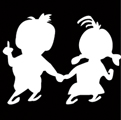 |
Partnerarbeit (pair activity)
Pair activities ask you to work together with one partner, asking each other questions, solving problems, or creating short pieces of writing. It is helpful to work with different partners throughout the semester.
|
 |
Grimm Grammar
This symbol indicates where the materials in Deutsch im Blick connect to relevant grammar points in Grimm Grammar. Complete the exercises online before coming to class.
|
 |
Schreiben (writing activity)
These activities ask you to use ideas and phrases you have learned to express your own thoughts or create with the language. There are different genres of writing: poetry, dialogs, screen plays, position papers, to help you prepare for 2nd-year German.
|
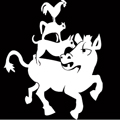 |
Gruppenarbeit (group activity)
Group activities ask students to work with 3-4 of their peers to survey cultural and personal preferences, to collaborate on written and oral presentations and benefit from student-to-student learning.
|
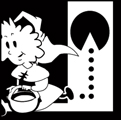 |
Spiele (games)
Games, as the name suggests, focus on playful group interaction (small or large groups of students) using German. They typically involve social activities that Germans themselves learn / play during childhood or as young adults.
|
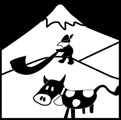 |
Kultur (cultural information)
In culture activities, students explore similarities and differences between their own culture(s) and those of the German-speaking world. The purpose is to help learners analyze cultural phenomena, and recognize individual versus societal patterns.
|
 |
Videoclips
Clips with native and non-native speakers of German are the main organizational framework for all materials in Deutsch im Blick. They provide examples for lexical and grammatical concepts and ideas for cultural exploration.
|
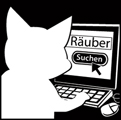 |
Lesen und Forschung im Internet (research on line)
These activities guide students in research on the Internet and provide literacy skills in German, as well as real-life examples of the language presented in Deutsch im Blick .
|
 |
WebQuests
Longer on-line research projects (two-three per chapter) help students immerse themselves in the topics covered by each chapter, using mostly websites relevant for college students in the German-speaking countries.
|
 |
Leseverständnis (reading tasks)
There are different types of reading we do every day: scan texts, read for specific information, read different types of texts The activities in Deutsch im Blick aim to help you develop reading strategies to cope with these diverse reading demands in German.
|
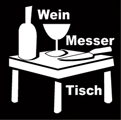 |
Wortschatz (vocabulary)
One of the most crucial components of effective communication is vocabulary. Vocabulary exercises help you build strategies for learning expressions, phrases (in context) that you need to be able to communicate in German.
|
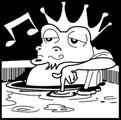 |
Lieder, Musik, Dichtung (songs, music, poetry)
Deutsch im Blick brings you music in each chapter, so you get to know groups and music that your German contemporaries like to listen to. These are fun portals to German youth-culture and a playful way to reinforce the language you are learning.
|
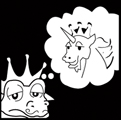 |
Zum Nachdenken (something to think about)
Language exists in a sociocultural context. These little mental exercises in each chapter ask you to stop and reflect on what you just learned, to analyze the language or concepts in the Deutsch im Blick materials. They help you locate the pedagogical tasks in a broader sociocultural environment, and understand that German is not merely a university subject but a language spoken in the real world by real people (a concept students who go study abroad sometimes find amusingly surprising :))
|
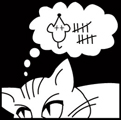 |
Meinungsumfragen (polls)
Interactive polls online provide a foundation for in-class discussions about cultural preferences regarding topics covered in Deutsch im Blick. The (highly unscientific) statistics are fun to analyze.
|

